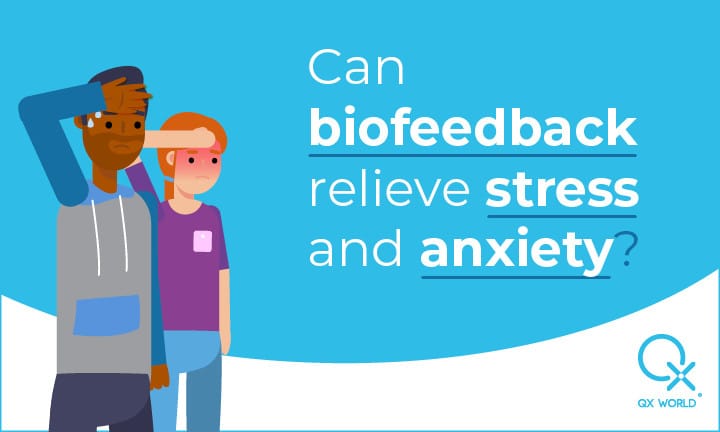
We live in busier times than ever, facing all kinds of pressure on a daily basis. No wonder, then, that many adults and children suffer increasingly from stress and anxiety. While tranquilizers merely offer a temporary solution, biofeedback can relieve stress and anxiety in the long term. In many cases, continued biofeedback therapy even eliminates the need for pharmaceuticals altogether. Continue reading to find out how it works!
To understand how biofeedback can offer relief from stress and anxiety – and to successfully use the technique yourself – grasping how your body reacts to stress is crucial. More specifically, stressful events can trigger a reaction called the fight-or-flight response. Because your body senses that it is in danger, it releases adrenaline and cortisol. These hormones give you the energy to ‘fight’ whatever is causing the danger, or to flee the scene. Other common reactions of the body to stress include:
While this primal response to danger used to be a lifesaver in prehistoric times, modern society often has us experience the same reaction in situations which are actually not life-threatening or physically dangerous. Think of the frustration you feel when stuck in traffic, for instance, or the stress you may experience when faced with a daunting project or a tight deadline.
To make matters worse, some people find that their feelings of stress or anxiety continue, even though the body is designed to return to its normal state once the stressful event has passed. These people suffer from what is called chronic stress.
Evidently, trying to control the body’s physical responses to stress simply by relying on intuition only is no easy feat. That’s where biofeedback comes in. Using a specialist device that measures heart rate, breathing pattern, and even brainwave activity, a biofeedback therapist can show you exactly how your body operates. All of the machine’s measurements are displayed on a monitor, with the therapist explaining to you how to interpret – and control or manipulate – them.
If your biofeedback therapist uses a quantum feedback device, handling stress and anxiety becomes even easier as quantum biofeedback focuses on the unconscious parts of the brain and the autonomic nervous system (the so-called body electric). By attempting to re-educate (brain) cells that are out of balance, this type of biofeedback makes the body more able to handle stress and anxiety even without increased body awareness.
Biofeedback therapy enables you to take control of stress and anxiety, as it helps you to sense when your body’s stress and anxiety levels are about to surge, and to quickly act on it. The therapist, after all, not only makes you more aware of your body’s involuntary processes, he or she also teaches you various relaxation techniques, to lower your heart and breathing rate, for example. You can use these to nip the unpleasant feelings in the bud.
Mastering these techniques takes time and determination, but biofeedback therapy makes it easier as you get to watch in real-time whether your efforts are taking effect. Moreover, after fifteen to thirty biofeedback therapy sessions, most people report that their fight-or-flight response is no longer being chronically triggered.
+1 (989) 681-1063
+1 (856) 322-8589